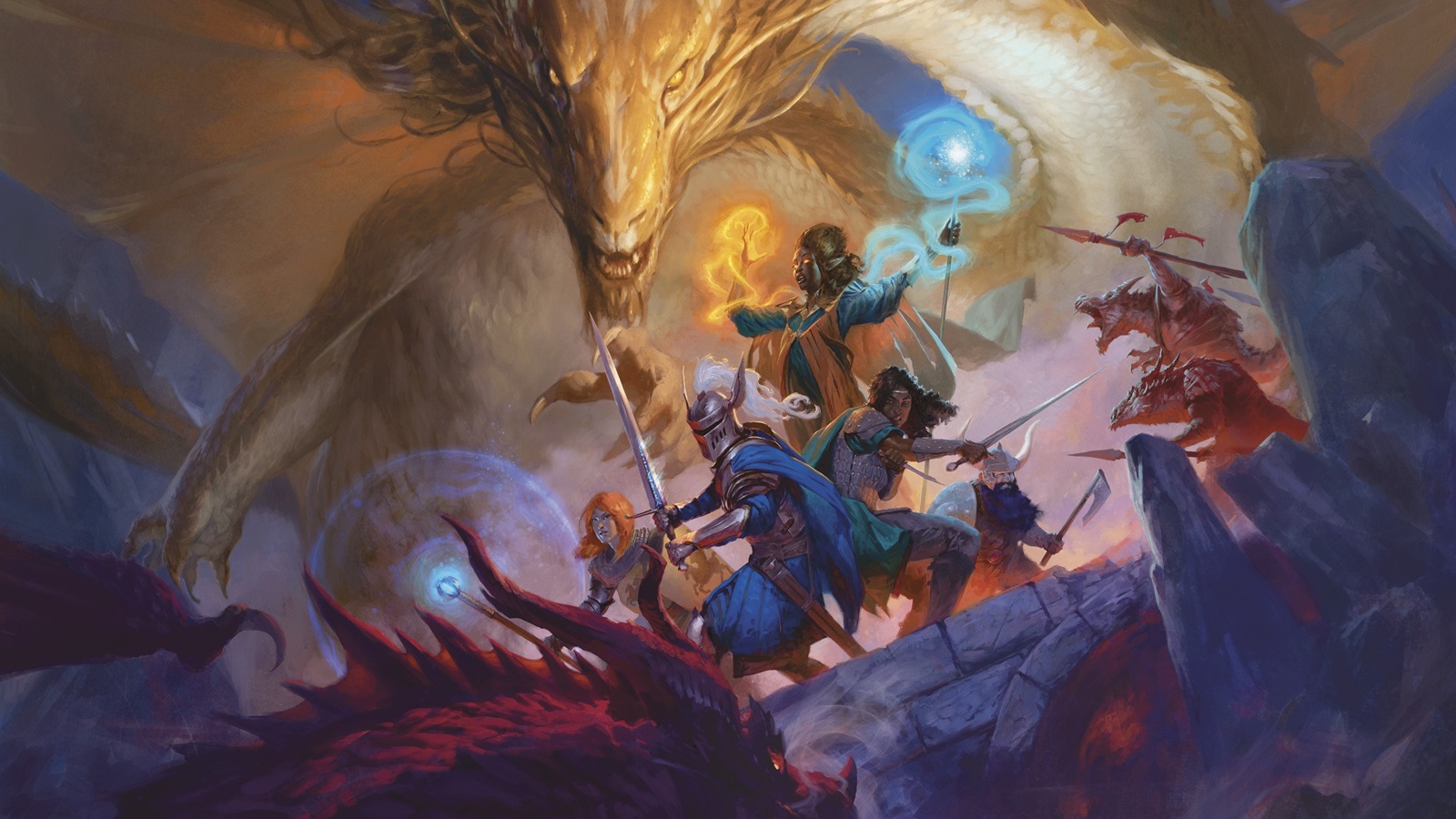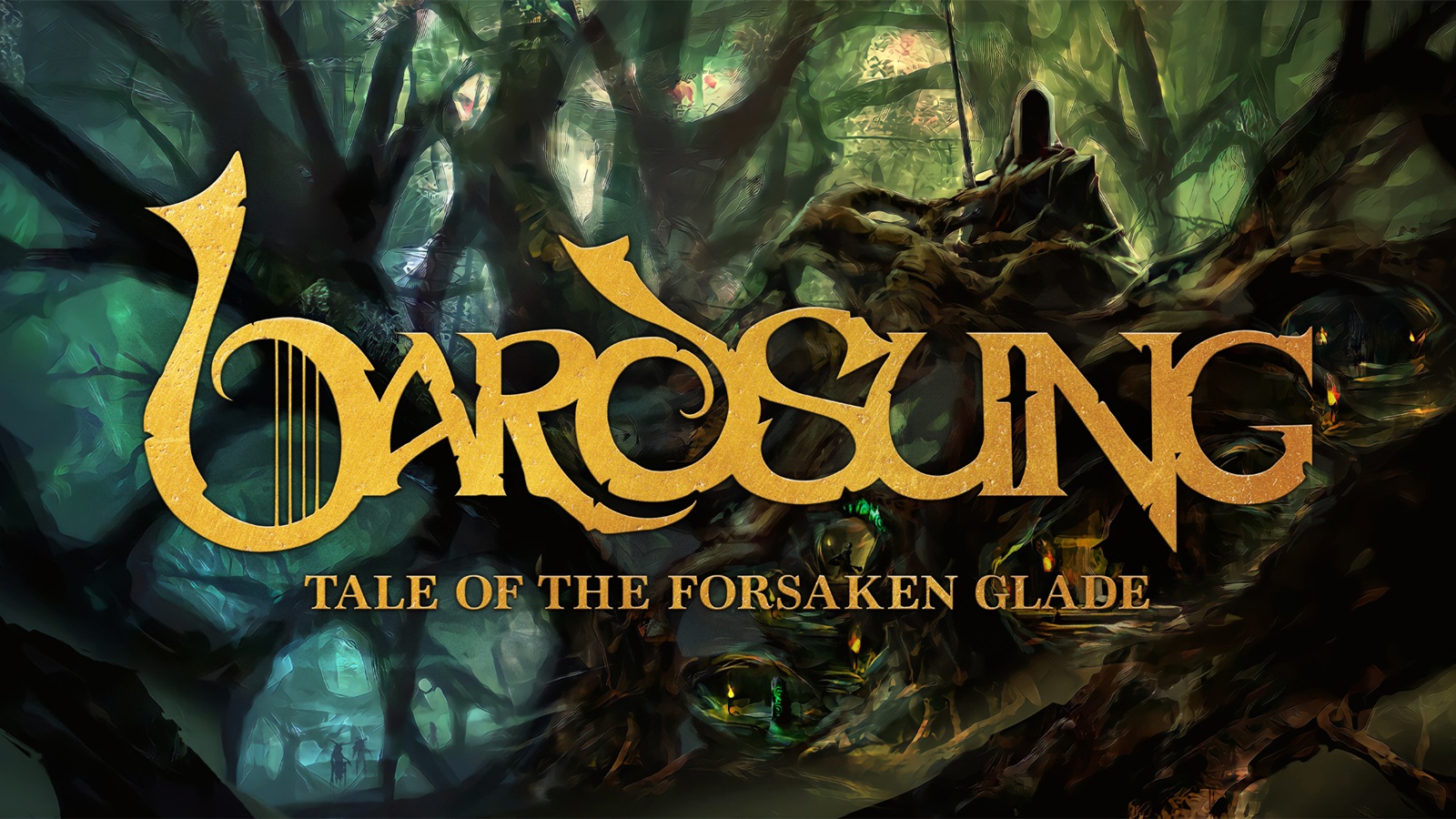The G.I. Joe Roleplaying Game Core Rulebook has grabbed my attention in the best ways possible. I seriously wasn’t expecting to be blown away by nearly everything within this hardcover. The artwork is stellar; the rules are clear and concise, and the character creation is extremely quick. There is a curtain quality to the hardcover that I adore. The themes of military action and adventure are nailed. Everything feels like it came right out of the G.I. Joe show and if that’s not your cup of tea, it’s extremely easy to pull the G.I. Joe branding off and run normal military campaigns.
Inside this book, you’ll find 13 chapters. They cover everything from the introduction to advice for running the game, and it’s presented in a nice format. There is a specific flow to the book that I appreciate. For example, everything you need to create your character is sequential. You’re also not being hit with a ton of G.I. Joe lore: I appreciate this because it makes introducing new players to the game easier.
Game Mechanics

The G.I. Joe Roleplaying Game sees a group of players, typically 3-5, taking on the role of a member of G.I. Joe. One player will have to be the game master. The game master runs the game, and the other players create characters to play.
This game runs off of the Essence20 system. Your character runs off of Essence. An Essence is your character’s core abilities. You have four Essences:
- Strength: How strong your character is and how much endurance they have.
- Speed: Your agility, balance, and reflexes.
- Smarts: Your awareness, mental acuity, intuition, and analysis.
- Social: Your confidence, poise, charisma, and leadership.
You also get 12 Essence points at the start of character creation. You spend these between the four Essence scores. Each level in an Essence will then give you a Skill Point. In this game, your character is always growing and improving.
Your character also gets Influences. Influences make up the bones of your character, they’re very important. You must select at least one, but I like to run two to keep things interesting. Influences come with a Hang-Up, Background Bonds, and a few Suggested Characteristics. Influences have mechanic benefits. I will use the Nomad Influence as an example. As a perk you get an Edge on Social Skill Tests when you’re attempting to gain insight into someone’s motives or see if they are lying to you. You also get Edge in any Culture Skill Tests about what cities you have lived in. There are multiple roleplay-specific benefits too. For example, Nomad has a chart they can roll on to see where they’ve lived previously. There is a whole chart of bonds for each Influence as well. Bonds help flesh out your character’s personality. Nomad has one where they write a letter every month to a friend who they’ve left behind every month.
Hang-Ups are a negative effect that comes with an Influence. I am addicted to having them on my character sheet because they change how your character plays and also adds interesting roleplay opportunities. Nomad’s Hang-Up is that they don’t often open up to others. You have a Snag on Social Skill Tests when dealing with strangers for the first time.
Skills and Abilities

Essence20 is a D20-based system. While playing, you’ll be using several dice ranging from a d2-d20. Now, skills have a range from a d2 to a d12. You use your base die, which is a d20, and add it to the highest skill die you have. If you don’t have a skill die, you can still attempt the action, but when you do, you’ll get a Snag. Snags require you to roll 2d20 and choose the lowest of the two.
Skills are not static. You’ll have the opportunity to increase a Skill’s Rank starting with a d2 and ending with a d12. You’ll also have multiple opportunities to learn new Specializations. Skill Specializations further define what your character is good at. For example, Athletics might use Climbing, Running, and Swimming as a Specialization.
One final thing I want to mention is that with the Game Master’s discretion, you can get a synergy bonus. This can only happen when you have multiple specializations that overlap. A synergy bonus will normally get you an Edge.
Character Creation
I love the character creation in this game. So far, I’ve made 5 different characters and plan on making more as time goes on. Since this is my first time reviewing the system, I will take you through the whole process. You can find the character sheet used here on the Renegade Game Studios website.
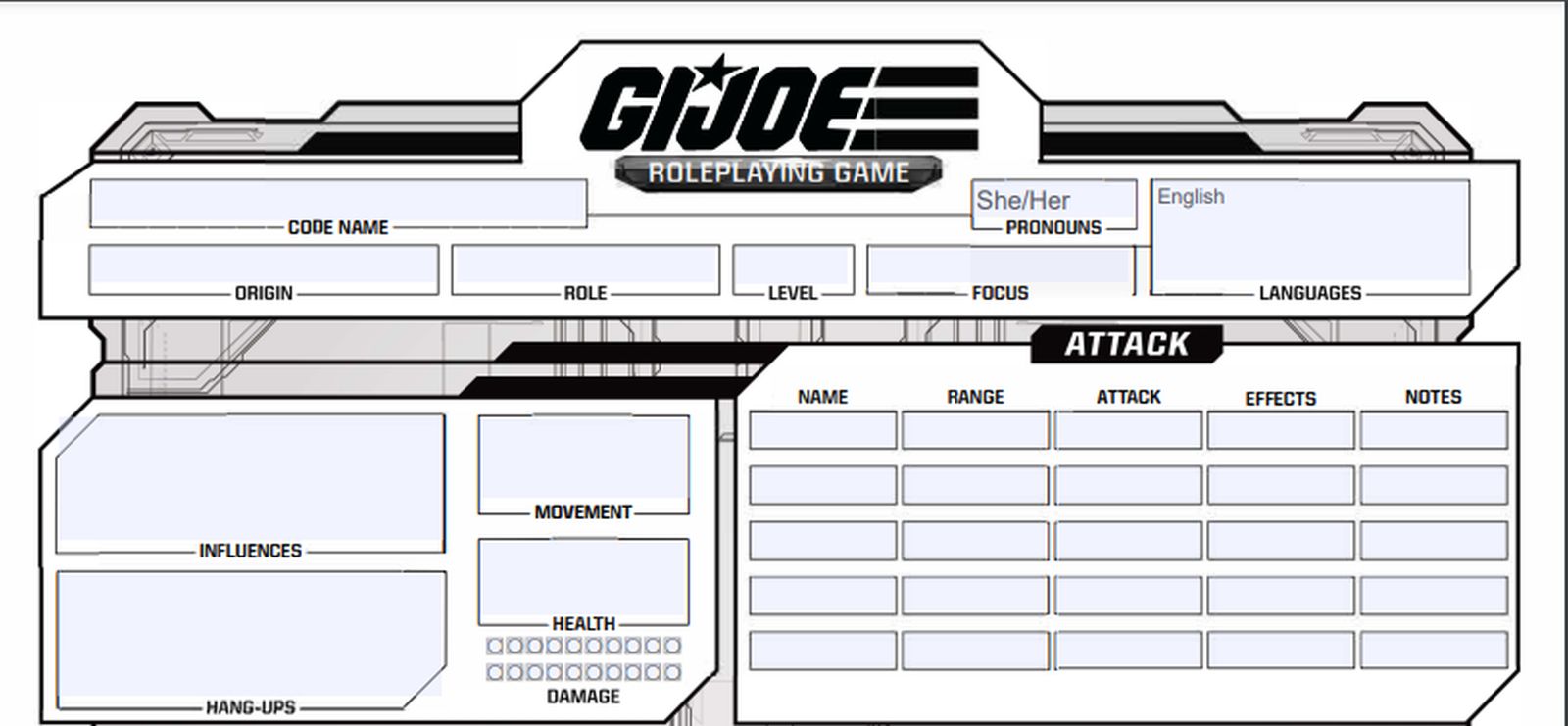
The top of the character sheet looks like what you would expect, along with space for a code name. For example, Scarlett’s code name is…Scarlett. You’ll notice that there is no spot for your character’s “real” name here.
Languages and Level are the same as you would expect from any other roleplaying game. Depending on who’s running the game, I found that the languages were less important than I would like them to be. Aside from a few short paragraphs, there is nothing in the rules when it comes to making use of languages. When I run the game, I make full use of everyone’s languages.
Movement, Damage, and Health are all exactly what they say they are. As a note, your Joe will be squishy at the start of the game. You can fix this by starting at level 5, but I like how the game starts with a level 1 character. Influences are covered at the beginning of this article.
Origins are interesting too, representing the part of your character’s life that gets them noticed by G.I. Joe. Your Origin comes with a special trait, an Essence Increase, Origin Skill, Starting Health, Movement, Languages, and Origin Benefit. You’ll also be choosing an Origin Branch. There are not many words I can use to describe how much I love this. It’s extremely cool to bring your character to life this way, and this is also an extremely easy way for players to get their Health and Movement without doing too much work. When I showcase a complete character sheet, I will dive into this in more detail.
After you select your Origin you have to pick your Role, functionally a character class. Roles describe how they best serve the team. Now, you can have duplicate Roles per game. It won’t hurt anything or ruin the experience. Roles come with one or more Role Perks, training in two Essence and Role Skills, equipment training and qualifications, more benefits, and a Role Focus. Roles are by far the most important part of character creation and they help make your character unique.
On the second page, you’ll find your Essence Scores and your Skills. At the start of character creation, you’ll have 12 Essence to put into whatever scores you want. Having 12 Essence Points to assign might not seem like a lot, but your numbers will increase as you continue character creation. To make this process smoother I recommend choosing your Skills last.
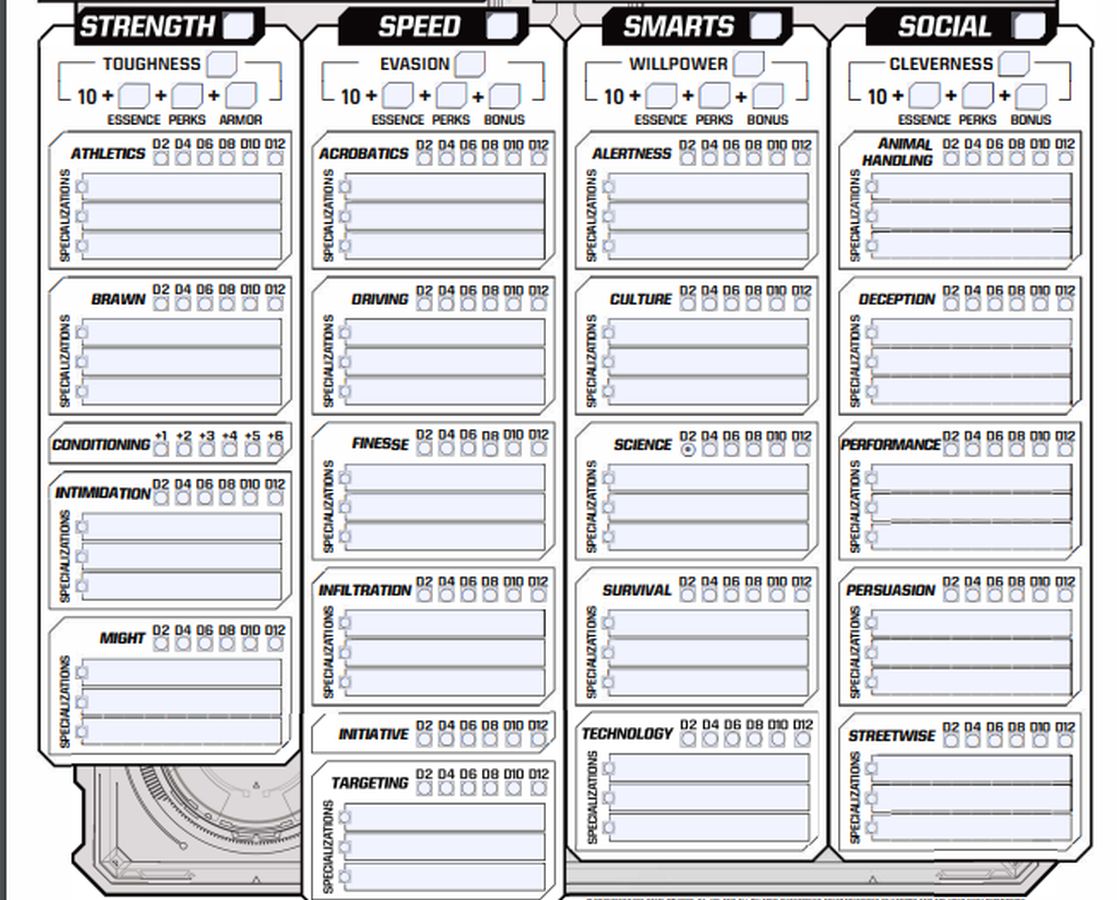
Now, you have to select one to three Influences. Keep in mind that if you pick more, you will still get the associated Hang-Ups. I love working them into the game as the Game Master and my players loved using them for roleplay. The Core Rulebook has the following Influences:
- Adventurer
- Artisan
- Athlete
- Checkered Past
- Gearhead
- Greenshirt
- Martial Artist
- Nomad
- Professional
- Small Town Roots
- Specialist
- Thrillseeker

For this character, I’ll be making a Gearhead/Thrillseeker. The reason I like this part of the process is because the designers made the Influences extremely easy to follow. At this point, I want to talk about a major gripe I have with the default character sheet. The boxes are small. The sheet starts to feel cramped even as a PDF. As you add more information things become increasingly more claustrophobic. Nonetheless, the character sheet fittingly captures the theme of the game and is beautifully designed.
Now is the time to choose your Origin. In the Core Rulebook, the Origin options are:
- Army
- Navy
- Air Force
- First Responder
- Covert Ops
- Intelligence
- Civilian
- Engineer
- Scientist
For this character, I will choose the Air Force. The Origin options are fleshed out enough to add a little spice to your character. I do wish that all the Origins got the same amount of attention. It feels like the big three got the most. You’ll notice that the formatting is better for the big three Origins. Plus, they appear to offer more roleplay details and fit the general theme of the game only slightly better. The big three are the Army, Navy, and Air Force. The layout for this section is okay. At some points, the rules feel cramped or trimmed down. Keep in mind there is a notes section that I didn’t use. The cramped feeling comes from the Training and Qualifications boxes and the Background Bonds boxes.

Now it’s time to select your Role. In the Core Rulebook, the Role options are:
- Commando
- Infantry
- Officer
- Ranger
- Renegade
- Technician
- Vanguard
For this character, I am choosing the Ranger role. At this point, you’ll be getting your Focus and finishing up your sheet. I enjoy character creation in this game, my only request would be for a bigger character sheet overall. There are other sheet options, but this is the one that you’ll be using the most when you start the game for the first time.
Filling in the derived stats, I marked those with the red arrow, is extremely easy. It’s 10+ whatever number you have there. I always like to do this last. The blue arrow shows you where you would put your Skill Specializations: These expand your skills and give you further control of what your character can and can’t do well. What you see here is your defense, and you always do this part last. Your defense will come into play during combat and sometimes during specific roleplaying scenes.
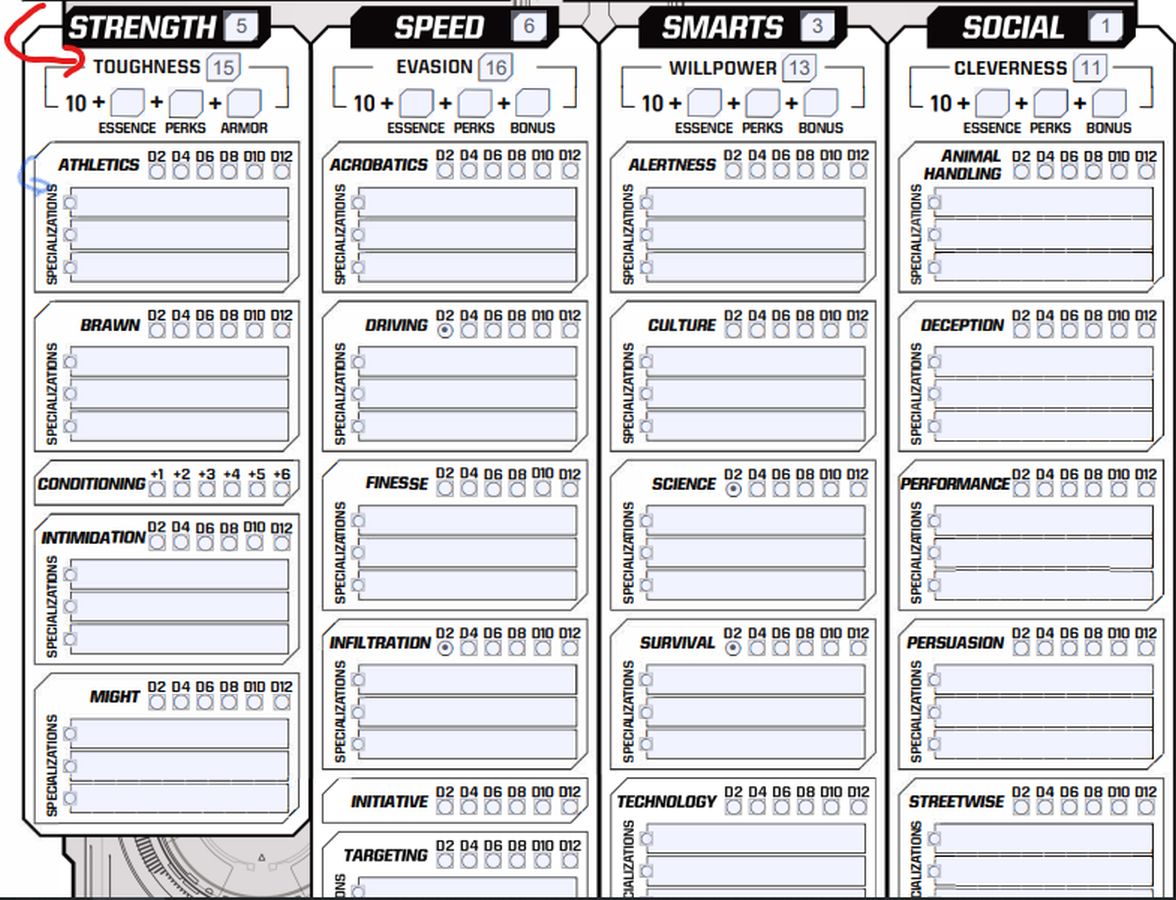
Combat and Equipment
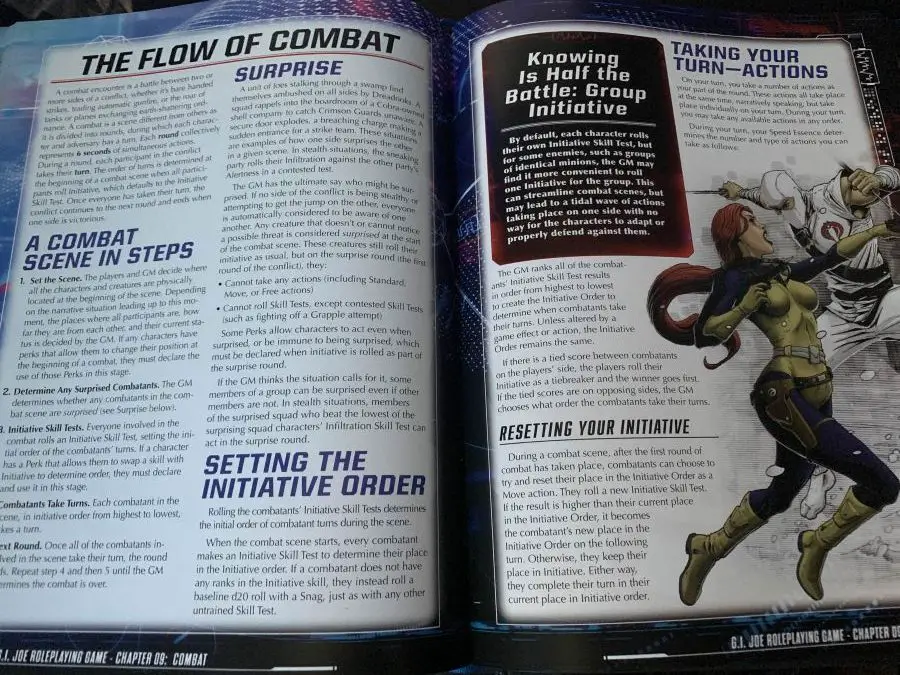
The basics of combat go as follows: set the scene, determine any surprised combatants, initiative, skill tests, combatants take turns, next round. It took my group a minute to grasp these directions, but once we got it, combat went smoothly.
My favorite part of the combat is how the rules are presented. The rules are explained as concisely as possible. This is perfect for me because I don’t mind filling in any blanks myself. If you’re someone who wants long, detailed explanations, you might not like this.
My group appreciated the rules for multi-weapon attacks and underwater combat. Normally, I don’t like running underwater combat at all but I figured it wouldn’t hurt to give it a go and we had so much fun. Underwater combat allows characters with the Aquatic Movement Type to shine. I appreciate it because it’s simple but again there is only a paragraph dedicated to these rules.

The equipment chapter has a lot of content. You don’t buy equipment in this game; you’re assigned it and allowed to make requests before the mission. Your requests are limited by level, mission type, and what your character specializes in. You won’t be able to get what you want every time. This plays into the military theme very well and I appreciate that. It also makes keeping track of equipment a lot easier.
There are rules for upgrading equipment and weapons, something that a player of mine spent a lot of time doing and it was a lot of fun. Weapons are chock full of traits and effects. Some weapons are elemental, like flamethrowers and tasers, while others allow you to ignite them. The equipment section is remarkably fleshed out. The only issue is how the tables and information flow. Breaking up some of the tables would’ve been awesome.
Exploration
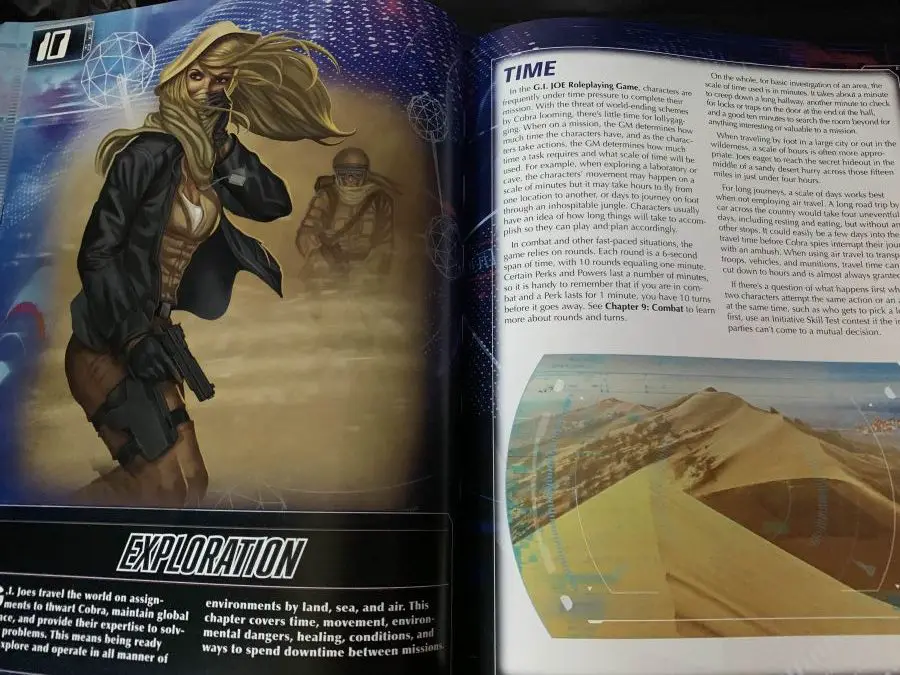
Exploration has a good chunk of rules, starting on page 216 and ending on page 226. You’ll find rules for everything from Travel Pace to Between Missions and Downtime. This focus keeps the game from being a series of fights, challenging your group to consider logistics and plan out their journeys. There are rules for general movement, travel pace, mounts and vehicles, and rough terrain. I like this because when you use these rules they have the potential to bring your world to life in a completely different way than some players might be used to.
What stood out to me was the rules for Extreme Conditions. They have everything in here from extreme cold to hostile weather in general. I can’t stress enough how simple these rules are. They’re easy to digest and work into your game without reading 20 paragraphs of explanation.
Some other fun things in this section are the eating and drinking rules and the rules for allergies. For a basic allergy, you have to succeed on a DIF 10 Brawn Skill Test or you’re affected by the allergy. We tested this and it was hilarious to have a character break out in a sneezing fit in the middle of a jungle mission.
Final Thoughts
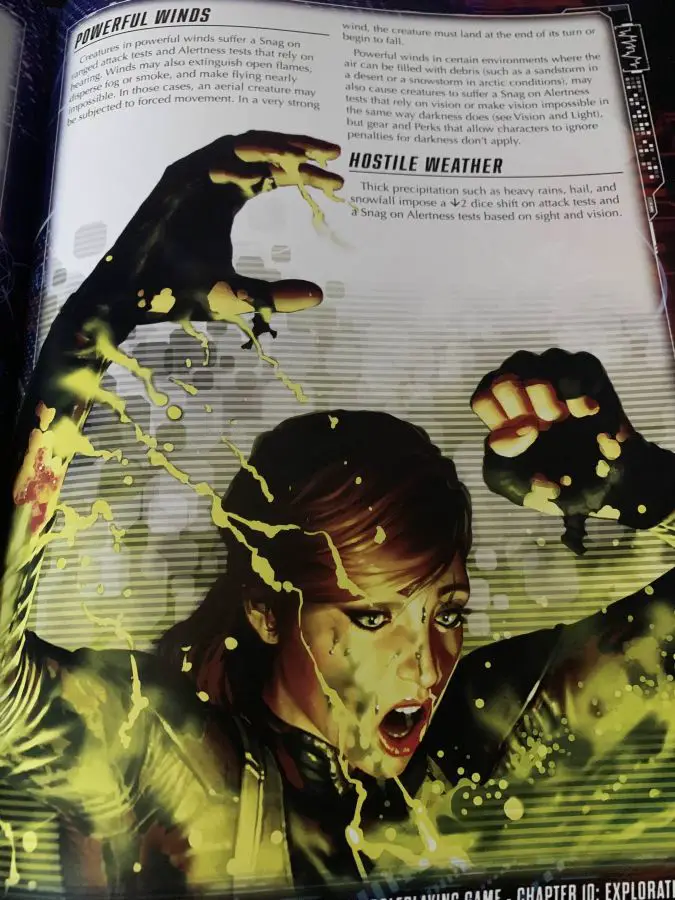
I have to take some time to talk about this book’s artwork. I am completely obsessed with it and would love to plaster some of it all over my walls. Steve Morris did the cover art, and it captures the mood of this book perfectly. The military action theme seeps through this book and it all starts with the cover.
There are a lot of illustrators, too many to list, but holy hell they nailed it. The artwork featured above is one of my favorite pieces I have ever seen in a roleplaying game book, ever. There is a lot of feeling that comes through with each art piece and they tie the book together.
That said, there are some faults. This book has a lot of typos and random letters thrown at the end of sentences. It didn’t hamper my reading experience but was a bit weird to see. The tables towards the back of the book are hard to follow and could benefit from being broken up better. I also wish a few of the boxes on the character sheet had more room.
There is not a lot of advice for running the game either. Chapter 13 details running a mission, but there could’ve been so much more here. A Game Master guide or something would be the icing on the cake. I did like the selection of enemies and vehicles in the back of the book. It was just enough for me to figure out how to make my own combatants for my games.
The G.I. Joe Roleplaying Game is extremely solid. I love it. The build of the book is fantastic. Renegade nailed the premise and I can’t wait to see what else is in store.

The G.I. Joe roleplaying game is an extremely solid showcasing of the Essence 20 system. The core themes of G.I. Joe seep through this book and the visuals are top-notch. Character creation is smooth, and the layout is great! Do not sleep on the G.I. Joe Roleplaying Game.
PROS
- Easy to understand character creation.
- Fleshed out rules for upgrading weapons.
- Fun and fluid combat.
CONS
- Some editing mistakes.
- A subpar game masters section.
- The character sheet starts feeling claustrophobic as you add information.
Unless otherwise stated, the product in this article was provided for review purposes.
See below for our list of partners and affiliates:

 2 days ago
32
2 days ago
32










